CHIneseCOMmunistVIRUS I believe. I've seen it used elsewhere but mostly on this forum.What does “chicomvirus” mean? Serious question since I’ve only seen it in this thread.
Colleges
- AAC
- ACC
- Big 12
- Big East
- Big Ten
- Pac-12
- SEC
- Atlantic 10
- Conference USA
- Independents
- Junior College
- Mountain West
- Sun Belt
- MAC
- More
- Navy
- UAB
- Tulsa
- UTSA
- Charlotte
- Florida Atlantic
- Temple
- Rice
- East Carolina
- USF
- SMU
- North Texas
- Tulane
- Memphis
- Miami
- Louisville
- Virginia
- Syracuse
- Wake Forest
- Duke
- Boston College
- Virginia Tech
- Georgia Tech
- Pittsburgh
- North Carolina
- North Carolina State
- Clemson
- Florida State
- Cincinnati
- BYU
- Houston
- Iowa State
- Kansas State
- Kansas
- Texas
- Oklahoma State
- TCU
- Texas Tech
- Baylor
- Oklahoma
- UCF
- West Virginia
- Wisconsin
- Penn State
- Ohio State
- Purdue
- Minnesota
- Iowa
- Nebraska
- Illinois
- Indiana
- Rutgers
- Michigan State
- Maryland
- Michigan
- Northwestern
- Arizona State
- Oregon State
- UCLA
- Colorado
- Stanford
- Oregon
- Arizona
- California
- Washington
- USC
- Utah
- Washington State
- Texas A&M
- Auburn
- Mississippi State
- Kentucky
- South Carolina
- Arkansas
- Florida
- Missouri
- Ole Miss
- Alabama
- LSU
- Georgia
- Vanderbilt
- Tennessee
- Louisiana Tech
- New Mexico State
- Middle Tennessee
- Western Kentucky
- UTEP
- Florida International University
High School
- West
- Midwest
- Northeast
- Southeast
- Other
- Alaska
- Arizona
- California
- Colorado
- Nevada
- New Mexico
- Northern California
- Oregon
- Southern California Preps
- Washington
- Edgy Tim
- Indiana
- Kansas
- Nebraska
- Iowa
- Michigan
- Minnesota
- Missouri
- Oklahoma Varsity
- Texas Basketball
- Texas
- Wisconsin
- Delaware
- Maryland
- New Jersey Basketball
- New Jersey
- New York City Basketball
- Ohio
- Pennsylvania
- Greater Cincinnati
- Virginia
- West Virginia Preps
ADVERTISEMENT
Install the app
How to install the app on iOS
Follow along with the video below to see how to install our site as a web app on your home screen.
Note: This feature may not be available in some browsers.
You are using an out of date browser. It may not display this or other websites correctly.
You should upgrade or use an alternative browser.
You should upgrade or use an alternative browser.
COVID-19 Pandemic: Transmissions, Deaths, Treatments, Vaccines, Interventions and More...
- Thread starter Richie O
- Start date
- Status
- Not open for further replies.
That isn't sexy for our so called self proclaimed "experts" even though they aren't doctors, scientists or even meteorologists. But post something from a real expert and they kill those that don't fit their admitted bias.you keep bringing up Texas and Florida constantly....the bigger story long haul is NY and NJ and Mass
you keep bringing up Texas and Florida constantly....the bigger story long haul is NY and NJ and Mass
No it’s not. NY, NJ and Mass plateaued long ago. It’s just you disagreeing and trying to change the narrative. The story with a pandemic is positivity rates, case trends and then deaths. RU#s as stated talked Northeastern states endlessly. Connecticut today isn’t even in the top 25 in cases per capita. In fact the only northeastern state in the top ten per capita is NY and in two weeks won’t even be top ten.
It appears the death rate is declining as a result of better treatments, a good thing but in two months these other states will start passing the northeastern states in deaths perhaps except NY.
The irony is you speak to South Dakota as a success and Connecticut as not. Meanwhile in the last week South Dakota passed Connecticut per capita. As did other states near South Dakota. Sturgis?
There is so many things wrong with your post. But fear mongers are fear mongers.No it’s not. NY, NJ and Mass plateaued long ago. It’s just you disagreeing and trying to change the narrative. The story with a pandemic is positivity rates, case trends and then deaths. RU#s as stated talked Northeastern states endlessly. Connecticut today isn’t even in the top 25 in cases per capita. In fact the only northeastern state in the top ten per capita is NY and in two weeks won’t even be top ten.
It appears the death rate is declining as a result of better treatments, a good thing but in two months these other states will start passing the northeastern states in deaths perhaps except NY.
The irony is you speak to South Dakota as a success and Connecticut as not. Meanwhile in the last week South Dakota passed Connecticut per capita. As did other states near South Dakota. Sturgis?
There is so many things wrong with your post. But fear mongers are fear mongers.
Thanks for intelligently pointing them out. Time to crawl back into your whiskey barrel.
Whatever Meth Head and I don't drink whiskeyThanks for intelligently pointing them out. Time to crawl back into your whiskey barrel.
No it’s not. NY, NJ and Mass plateaued long ago. It’s just you disagreeing and trying to change the narrative. The story with a pandemic is positivity rates, case trends and then deaths. RU#s as stated talked Northeastern states endlessly. Connecticut today isn’t even in the top 25 in cases per capita. In fact the only northeastern state in the top ten per capita is NY and in two weeks won’t even be top ten.
It appears the death rate is declining as a result of better treatments, a good thing but in two months these other states will start passing the northeastern states in deaths perhaps except NY.
The irony is you speak to South Dakota as a success and Connecticut as not. Meanwhile in the last week South Dakota passed Connecticut per capita. As did other states near South Dakota. Sturgis?
Who cares about cases...its about deaths
Do you even see the rates..ny and nj will never be passed
The fear mongers are out in force tonight.Who cares about cases...its about deaths
It's a qanon thing. Tinfoil hat, dregs of the internet type stuffCHIneseCOMmunistVIRUS I believe. I've seen it used elsewhere but mostly on this forum.
Who cares about cases...its about deaths
Do you even see the rates..ny and nj will never be passed
NJ very well might get passed by two or three States. California and Texas are both less than 3k behind and gaining by 50-150 per day.
edit - nvm you’re referring to rates
Great video by the Times showing what effective COVID communications looked like in many countries and what confusing, ineffective communications have looked like in the US. Fairly obvious rules of communications that we used to practice very well in past disasters - just not now - build trust, know your audience, and think long term. It's really not difficult - we just haven't done it yet.

 www.nytimes.com
www.nytimes.com

Opinion | The Three Rules of Coronavirus Communication (Published 2020)
While the United States was creating confusion with its virus messaging, the rest of the world got creative.
Time for the weekly update in bulleted format...in the very big picture, this "wave 2" has featured case peaks that were twice what they were in "wave 1" (although "wave 1" likely was well undercounted, due to lack of testing for much of it and wave 2 featured a much younger/milder infected population) and a hospitalization peak which was about the same as in wave 1 (likely more accurate than cases), but has had a death peak about half what it was in wave 1, which given similar hospitalization numbers, very likely means improved medical procedures and pharmaceutical treatments have had a significant effect.
https://covidtracking.com/data#chart-annotations
- Still using 7-day moving averages on a per capita (per 1MM) basis for most of the discussions of cases, hospitalizations and deaths (especially for comparing states), from the Covidtracking site.
- National Stats: After a 2-week peak at 65-68K/day from mid-July until the end of July (~2X the peak from wave 1, although wave 1 was likely well undercounted, due to lack of testing), cases have been slowly declining and the 7-day avg is now down below 50K/day for the first time since the beginning of July, which is good news. Hospitalizations peaked at about ~60K in late July, which is very close to the peak in the first wave, but if the dynamics were the same as the first wave, this 2nd peak would have also been ~2X what they were in the first wave, not roughly the same, meaning the hospitalization rate is roughly half the rate it was for the first wave (relative to cases). As per previous posts, hospitalizations are likely ~1/2 of what they were in wave 1 due to the combination of younger patient profile and more testing (per capita) leading to more mild cases. Deaths are up over 2X from their early July low and they've now clearly peaked at a rate of about 1000-1150 per day (7-day MA) over the past 3 weeks, which is about half of the April peak (2100-2250/day); given similar hospitalization rates, the most obvious reason for 1/2 the death rate is improved medical procedures/pharmaceutical treatments. So, relatively speaking, a bit of better news, although our current peak death rates are still worse than all but a handful of countries with over 50MM in population (Brazil, Mexico, Colombia), per capita.
- Cases in AZ/FL/TX/CA: For the 4 states I've been looking at, closely (Florida, Texas, California, as all three spiked and are the 3 largest states, plus Arizona, as it peaked earlier and has a similar population as NJ, the comparator) cases are continuing to decline in AZ, FL, and TX and they're declining again in CA after a 2nd spike. Another interesting observation is that FL/TX/AZ have all seen major drops (30-60% down from their recent peaks) in reported tests, which is a little disconcerting, as part of the case decrease is very likely due to the major drop in testing, especially given the rises in positive tests seen in all three states. No idea why they'd be reducing testing, although testing in TX did jump back up significantly this past week. As per last week's post, the AZ case peak was about 30% more, per capita (per 1MM people) than the NJ peak (about 3500/day or 400/1MM), while the FL peak was ~50% more, the TX peak was ~10% less and the CA peak was ~40% less.
- Hospitalizations in AZ/FL/TX/CA: AZ's hospitalizations peaked (and continue declining) at ~55% of NJ's (which were 8000 total or 900 per 1MM), while FL peaked at about 50% of NJ's per capita rate (and is declining) and TX peaked at ~45% of NJ's rate and is now declining. CA peaked last week at 25% of NJ's peak and are also declining. As per previous reports, these reductions vs. NJ are likely due to the much younger age of those infected in this wave, combined with far more aggressive testing than during our peak (we had positivity rates of 40-50% due to lack of tests), which is discovering more mild/asymptomatic cases.
- Deaths in AZ/FL/TX/CA: My guesstimate has been that deaths in AZ/FL/TX would likely be about 1/3-2/3 of the peaks of NJ (about 270-300/day or ~31/1MM), partly due to the younger age and milder cases of those infected (as above) and partly due to improved treatments and procedures. AZ peaked at ~40% of NJ's peak and despite having major fluctuations, they're death rates have been slowly declining for the past 2 weeks. FL peaked at about 30% of NJ's peak 2 weeks ago and declined a bit, but jumped back up, so it's premature to day they're declining yet. TX peaked at about 1/3 of NJ's peak and declined a bit since then, but leveled off close to their peak. CA's case/hospitalization rates have been well below the other 3 states and their death rate peaked at about 12% of NJ's peak (and is now declining), as I've been predicting based on lower case rates per capita vs. the other 3 states. In hindsight, deaths in FL/TX/AX were likely on the low side of my guesstimates vs. NJ's mostly because hospitalization rates were lower than I thought they'd be (45-55% of NJ's), whereas I had accounted for improved medical procedures/treatments for people once they were hospitalized, reducing death rates.
- Getting back to the big picture, it's good to see that most states are now seeing flat or declining levels of cases, with only about 10 increasing (most were increasing several weeks ago); interestingly, the ones increasing now are the ones that have been hit the least so far and are some of the least densely populated states (like ND, SD, WY, VT, KS, and ME). Also, due to the 2-4 week lag from cases to deaths, deaths are still increasing or flat in many states.
https://www.worldometers.info/coronavirus/country/us
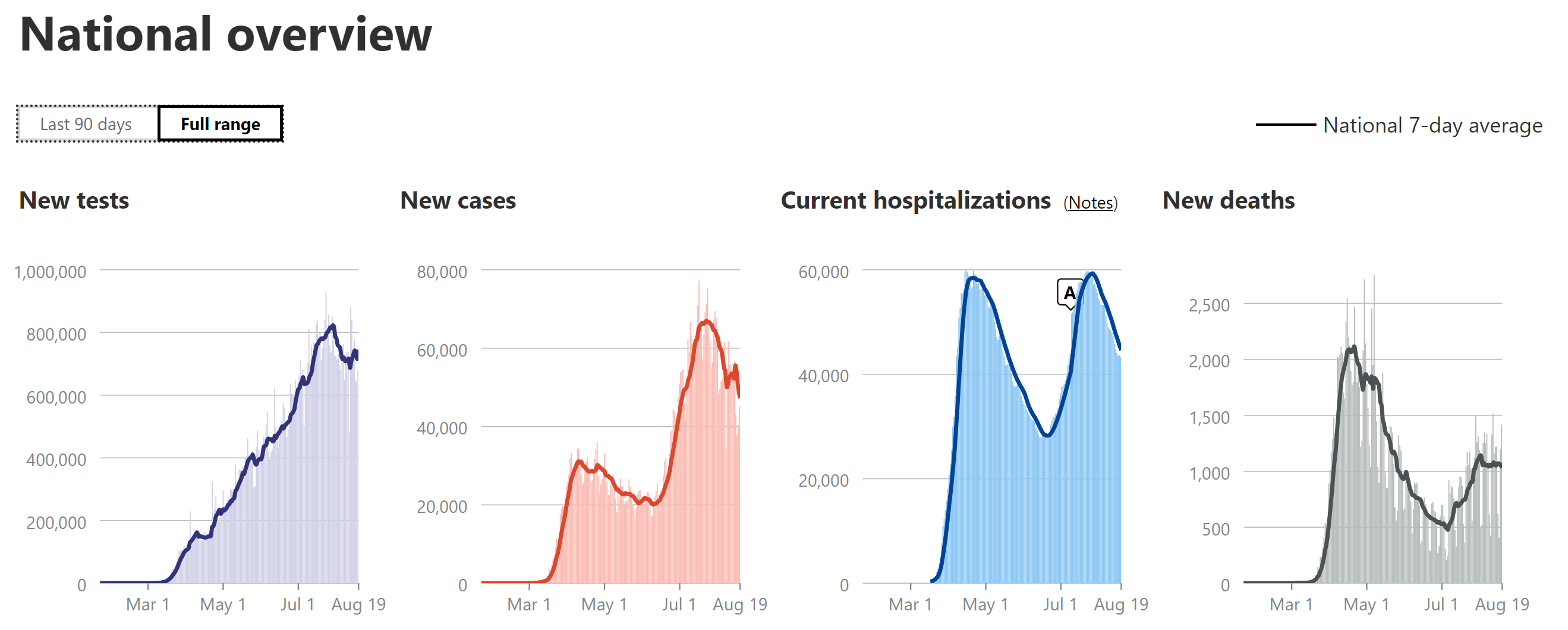
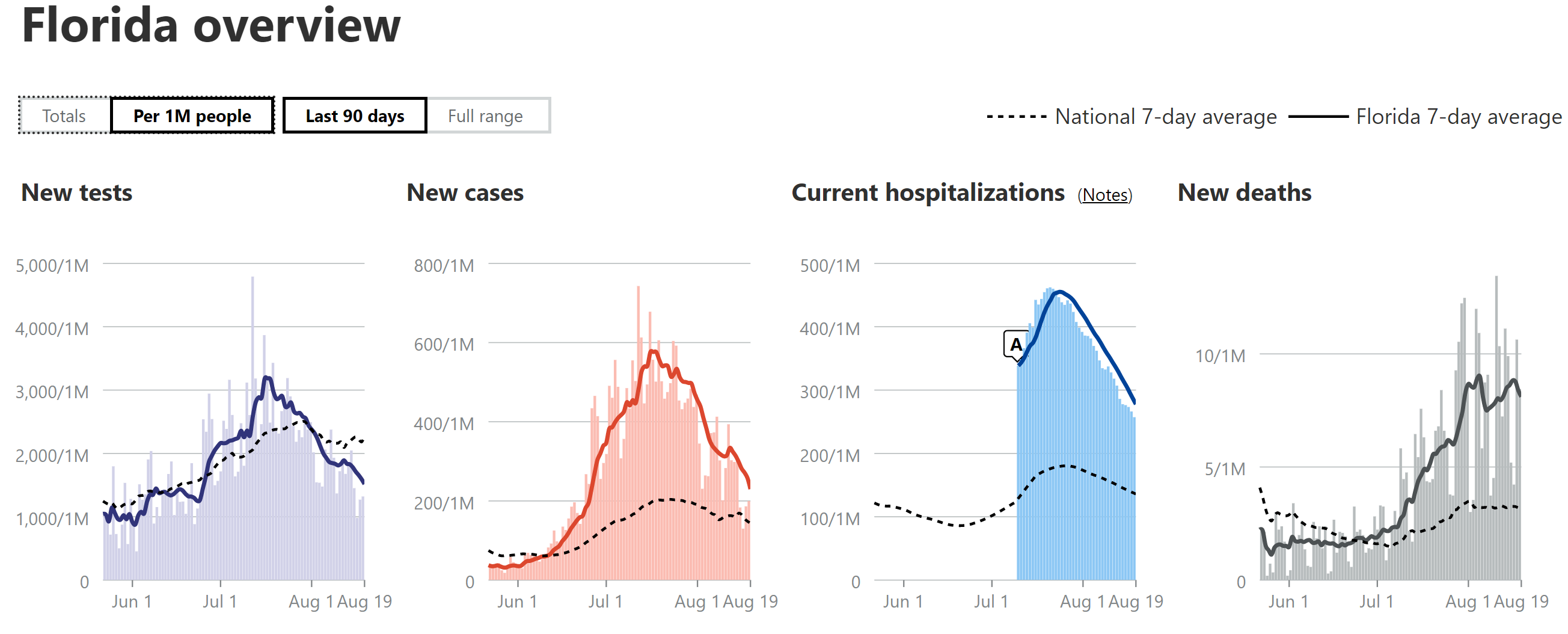
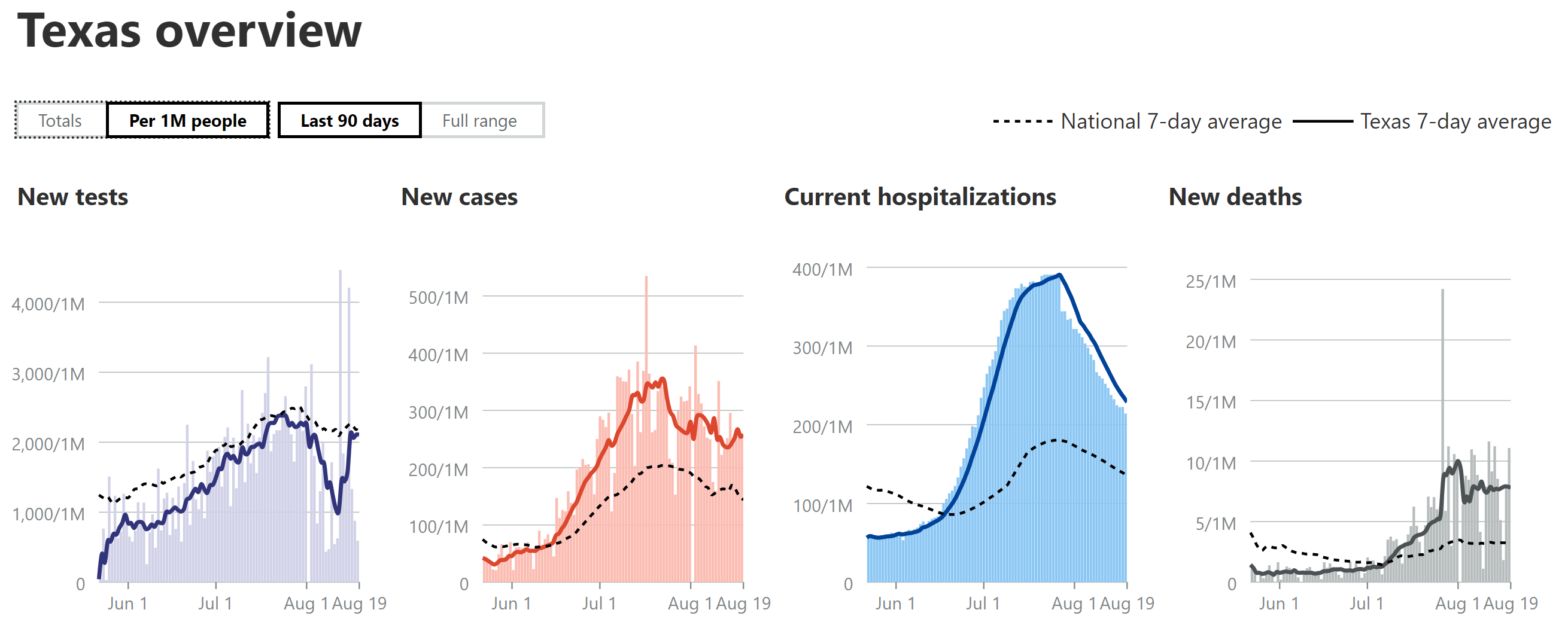
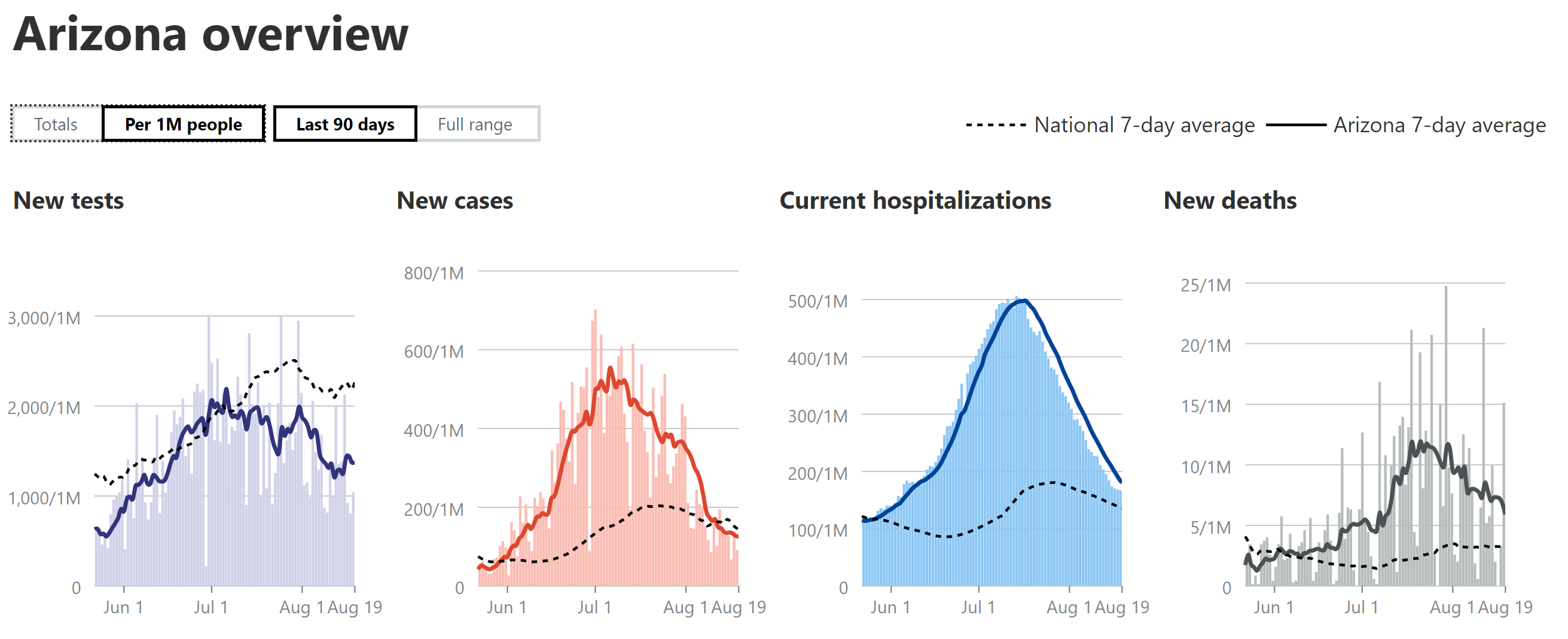


Skipped doing this last week (other priorities), but figured I'd do one more and this is probably it for comparing these states, as the major outbreaks are mostly over in these states with regard to cases and hospitalizations, which have dropped off substantially, although, as has been the case in most states, the decline in deaths is going more slowly. In case anyone people don't remember 2 months ago, the reason for picking these states was that they're the three most populous, plus a 4th state that had one of the earliest 2nd waves and has a similar population to NJ, which was my comparator, since it has had the highest death rate, overall and, of course, many of us live here. Below is the link to one of my early posts on these states, in late June, which had a number of predictions which mostly came true.
COVID-19 Pandemic: Transmissions, Deaths, Treatments, Vaccines, Interventions and More...
Article on another possible route of COVID infecting healthy cells. Besides the spike proteins they observe that it simulates the growth of filipodia (or tentacles) which some think help inject the virus into new cells but others aren’t so sure. But regardless they do think those tentacles help...
In the very big picture, this "wave 2" has featured case peaks that were twice what they were in "wave 1" (although "wave 1" likely was well undercounted, due to lack of testing for much of it and wave 2 featured a much younger/milder infected population) and a hospitalization peak which was about the same as in wave 1 (likely more accurate than cases), but has had a death peak about half what it was in wave 1, which given similar hospitalization numbers, very likely means improved medical procedures and pharmaceutical treatments have had a significant effect, halving deaths of seriously ill/hospitalized patients.
- Still using 7-day moving averages (7DMA) on a per capita (per 1MM) basis for most of the discussions of cases, hospitalizations and deaths (especially for comparing states), from the Covidtracking site.
- National Stats: After a 2-week peak at 65-68K/day from mid-July until the end of July (~2X the peak from wave 1, although wave 1 was likely well undercounted, due to lack of testing), cases have been steadily declining and the 7-day avg is now down around 40-45K/day, which is good news. Hospitalizations peaked at about ~60K in late July, which is very close to the peak in the first wave, but if the dynamics were the same as the first wave, this 2nd peak would have also been ~2X what they were in the first wave, not roughly the same, meaning the hospitalization rate is roughly half the rate it was for the first wave (relative to cases). As per previous posts, hospitalizations are likely ~1/2 of what they were in wave 1 due to the combination of younger patient profile and more testing (per capita) leading to more mild/asymptomatic cases (as has been discussed a lot recently). Deaths are up over 2X from their early July low and they clearly peaked at a rate of about 1000-1150 per day through about last week, which was about half of the April peak (2100-2250/day), but have now started to slowly decline and are down in the 900-950/day range (7DMA); given similar hospitalization rates, the most obvious reason for 1/2 the death rate is improved medical procedures/pharmaceutical treatments. So, relatively speaking, this is better news, although our current peak death rates are still worse than all but a handful of countries with over 50MM in population (Brazil, Mexico, Colombia), per capita.
- Cases in AZ/FL/TX/CA: For the 4 states I've been looking at, closely (Florida, Texas, California, as all three spiked and are the 3 largest states, plus Arizona, as it peaked earlier and has a similar population as NJ, the comparator) cases are continuing to decline fairly rapidly in AZ (especially), FL, and TX and they're declining quickly again in CA after a 2nd spike. As per recent posts, the AZ case peak was about 30% more, per capita (per 1MM people) than the NJ peak (which was about 3500/day or 400/1MM), while the FL peak was ~50% more, the TX peak was ~10% less and the CA peak was ~40% less.
- Hospitalizations in AZ/FL/TX/CA: AZ's hospitalizations peaked (and continue declining) at ~55% of NJ's (which were 8000 total or 900 per 1MM), while FL peaked at about 50% of NJ's per capita rate (and is declining), TX peaked at ~45% of NJ's rate and is now declining, and CA peaked at 25% of NJ's peak and is also declining. As per previous reports, these reductions vs. NJ are likely due to the much younger age of those infected in this wave, combined with far more aggressive testing than during our peak (we had positivity rates of 40-50% due to lack of tests), which is discovering more mild/asymptomatic cases.
- Deaths in AZ/FL/TX/CA: My guesstimate has been that deaths in AZ/FL/TX would likely be about 1/3-2/3 of the peaks of NJ (about 30/1MM), partly due to the younger age and milder cases of those infected (as above) and partly due to improved treatments and procedures. AZ peaked at ~40% of NJ's peak and despite having major fluctuations, they're death rates have been steadily declining for the past few weeks and are now down around half of their peak. FL peaked at about 30% of NJ's peak a few weeks ago and after some fluctuations has now declined to about 1/3 below their peak. TX peaked at about 1/3 of NJ's peak and after some fluctuations is now steadily declining and is at about 1/3 below their peak. CA's case/hospitalization rates have been well below the other 3 states and their death rate peaked at about 12% of NJ's peak (and is continuing to decline), as I've been predicting based on lower case rates/hospitalization rates per capita vs. the other 3 states. In hindsight, per capita deaths in FL/TX/AX were likely on the low side of my guesstimates vs. NJ's mostly because hospitalization rates were lower than I thought they'd be (45-55% of NJ's), whereas I had accounted for improved medical procedures/treatments for people once they were hospitalized, reducing death rates significantly vs. the first wave. Also, clearly California did the best out of these states with regard to cases, hospitalizations and deaths per capita in wave 2, which is not a surprise as CA had the strongest set of interventions in place (masking/distancing and not reopening as aggressively in the first place).
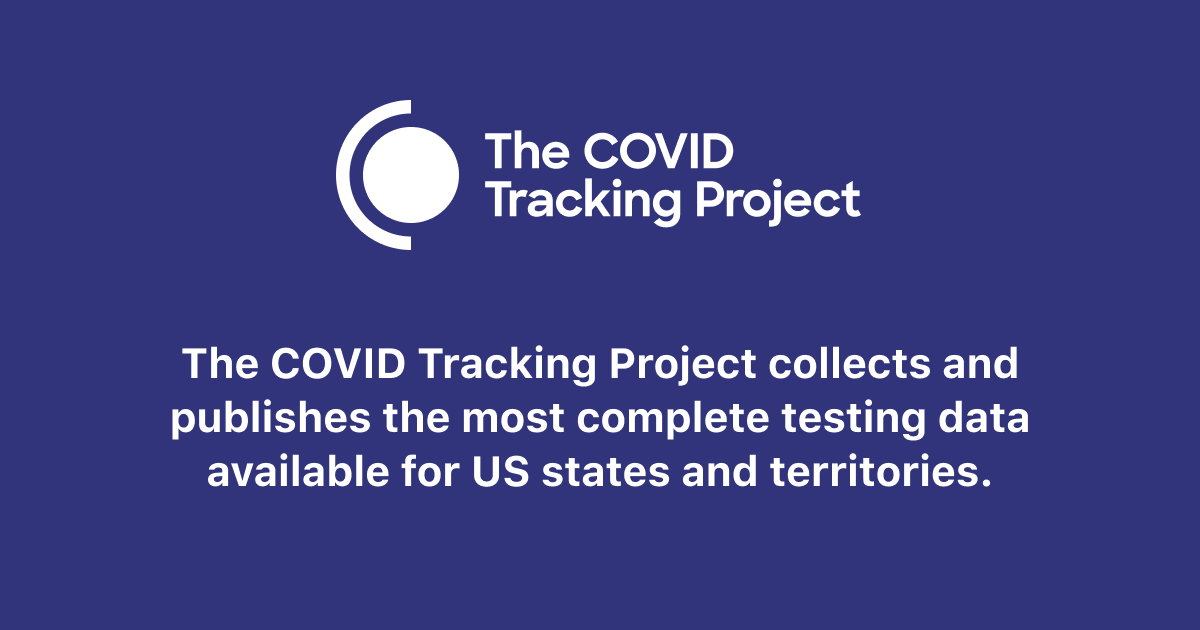

United States COVID - Coronavirus Statistics - Worldometer
United States Coronavirus update with statistics and graphs: total and new cases, deaths per day, mortality and recovery rates, current active cases, recoveries, trends and timeline.
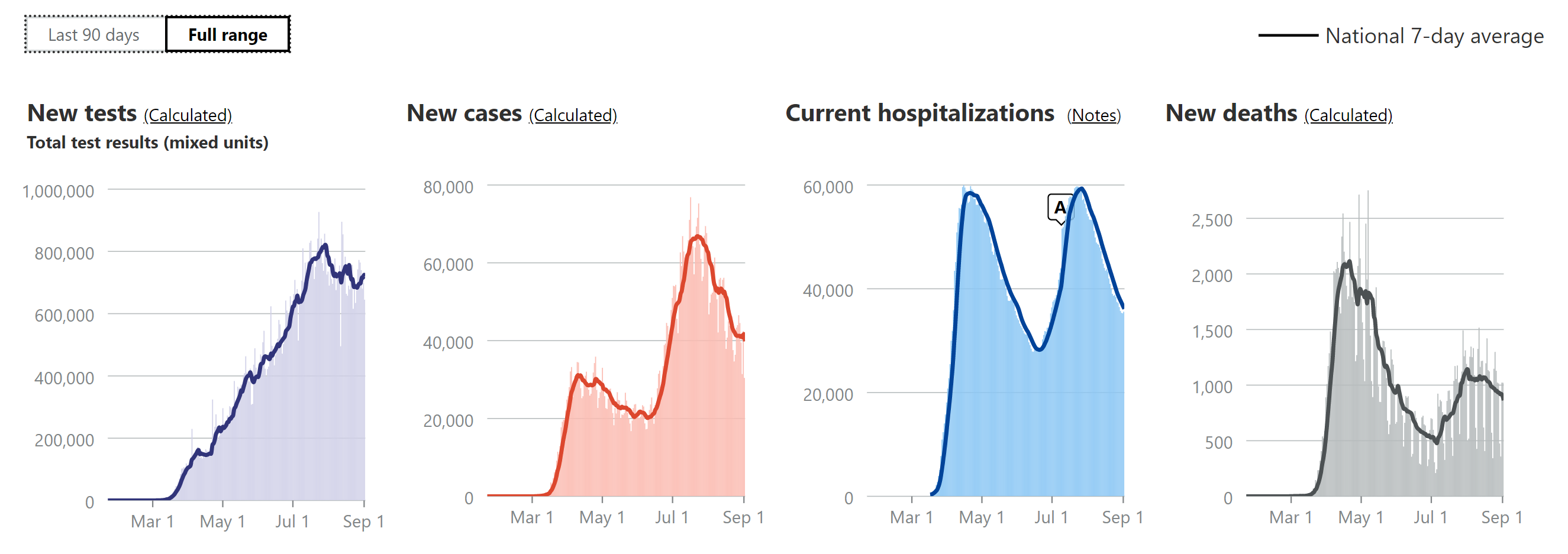
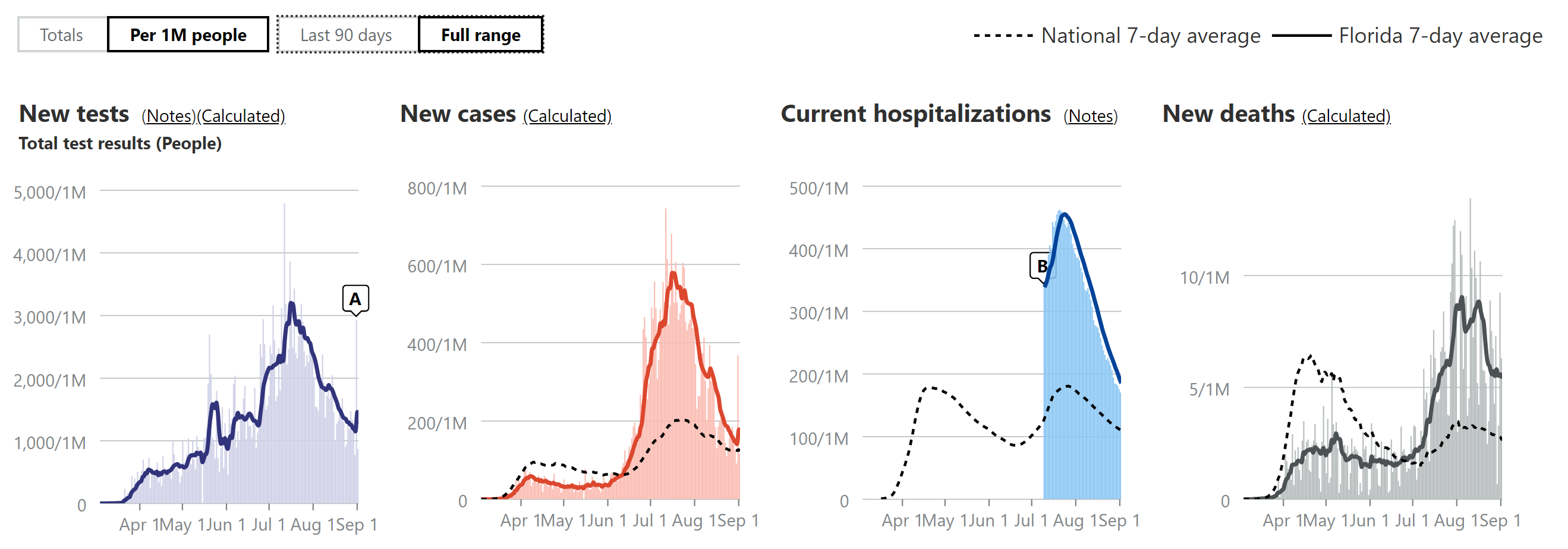
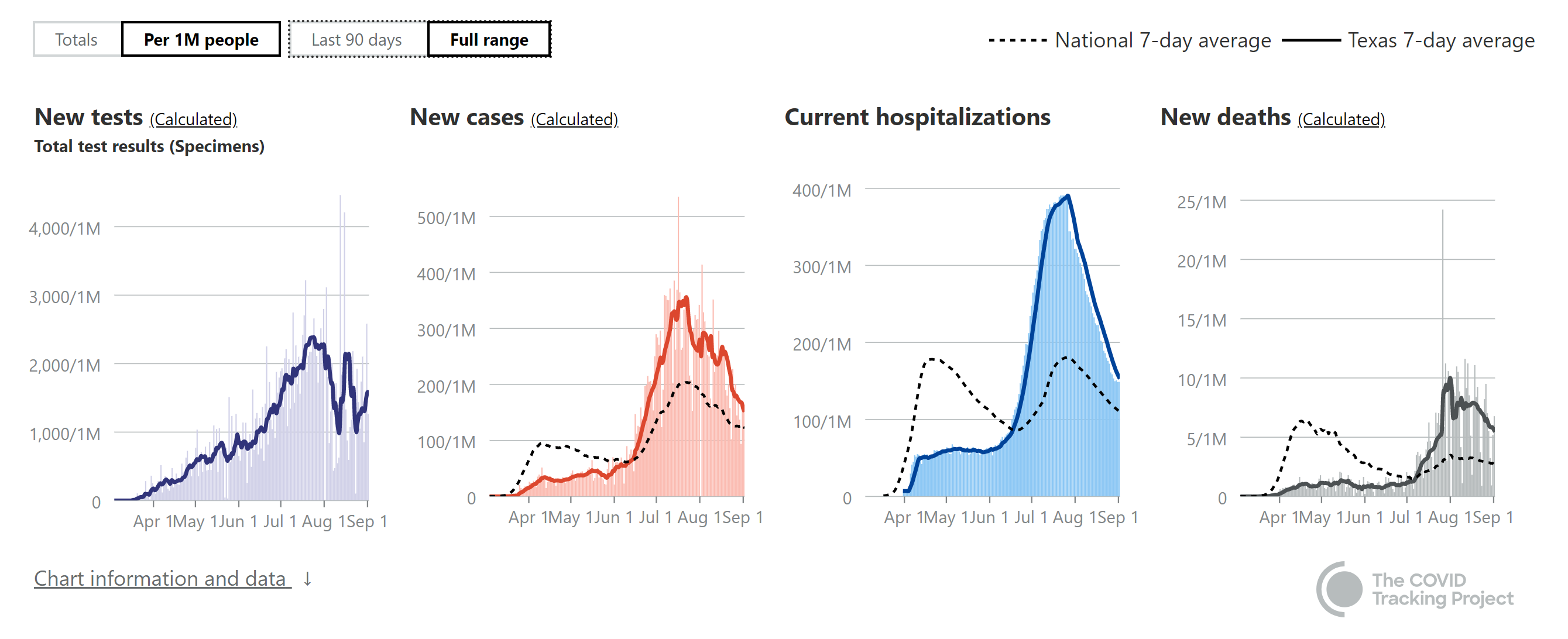
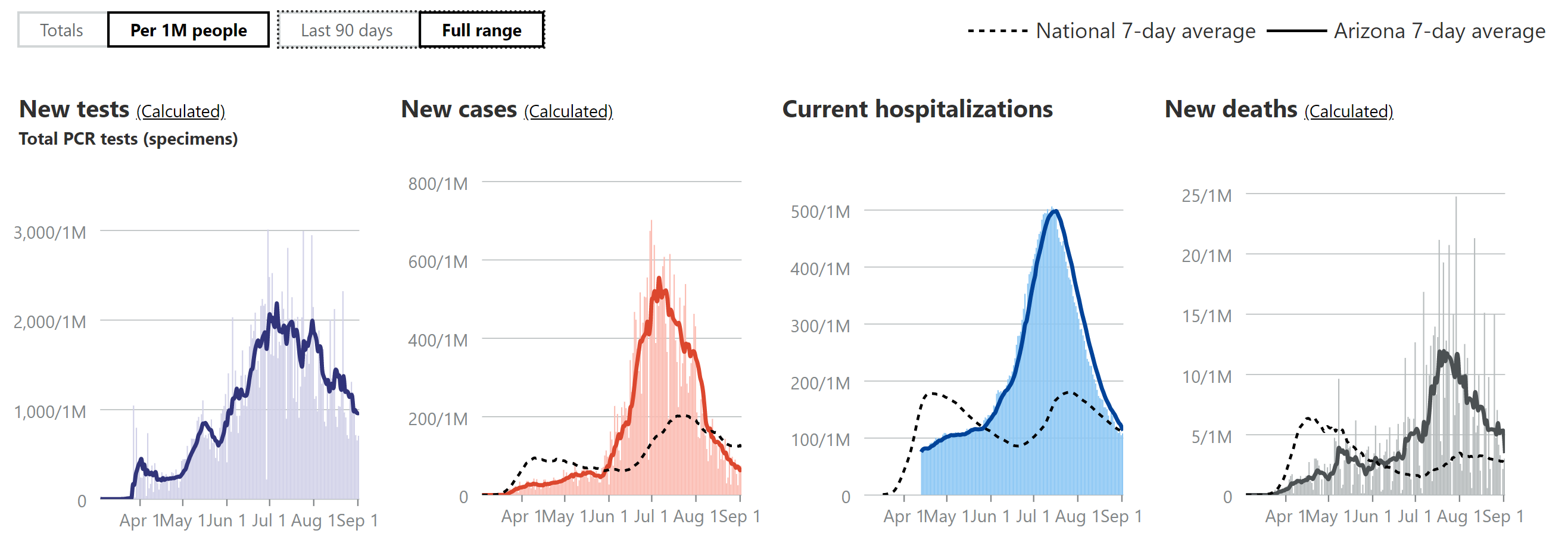
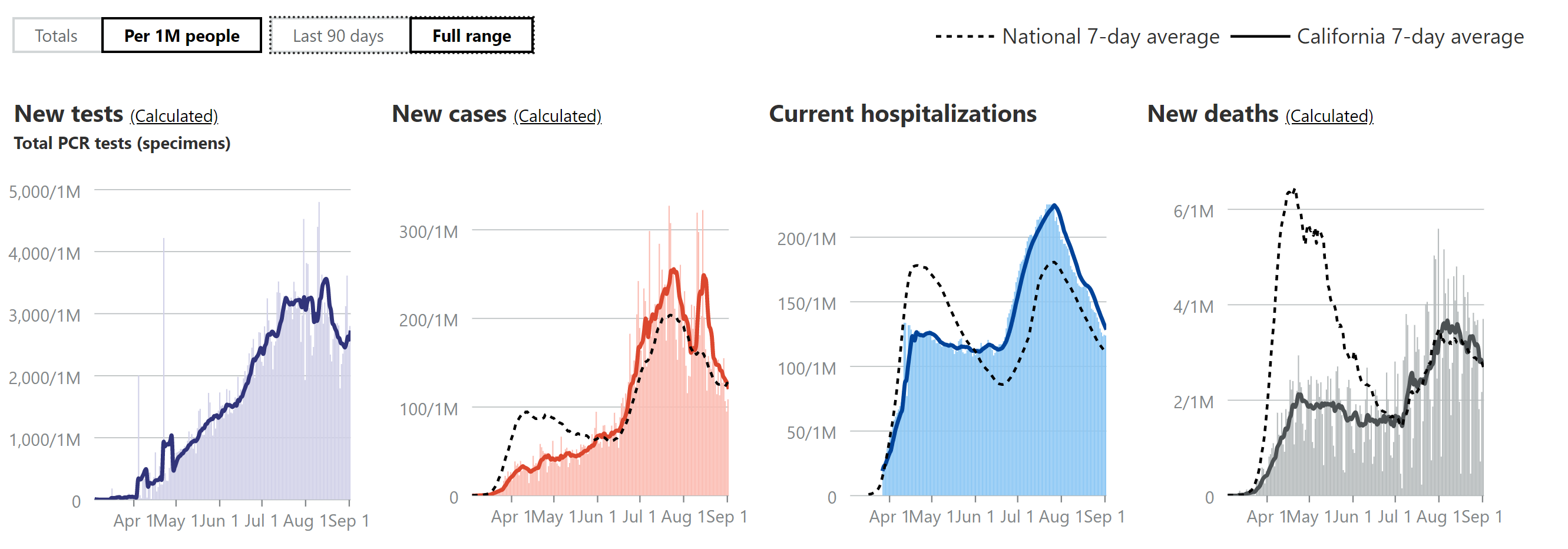
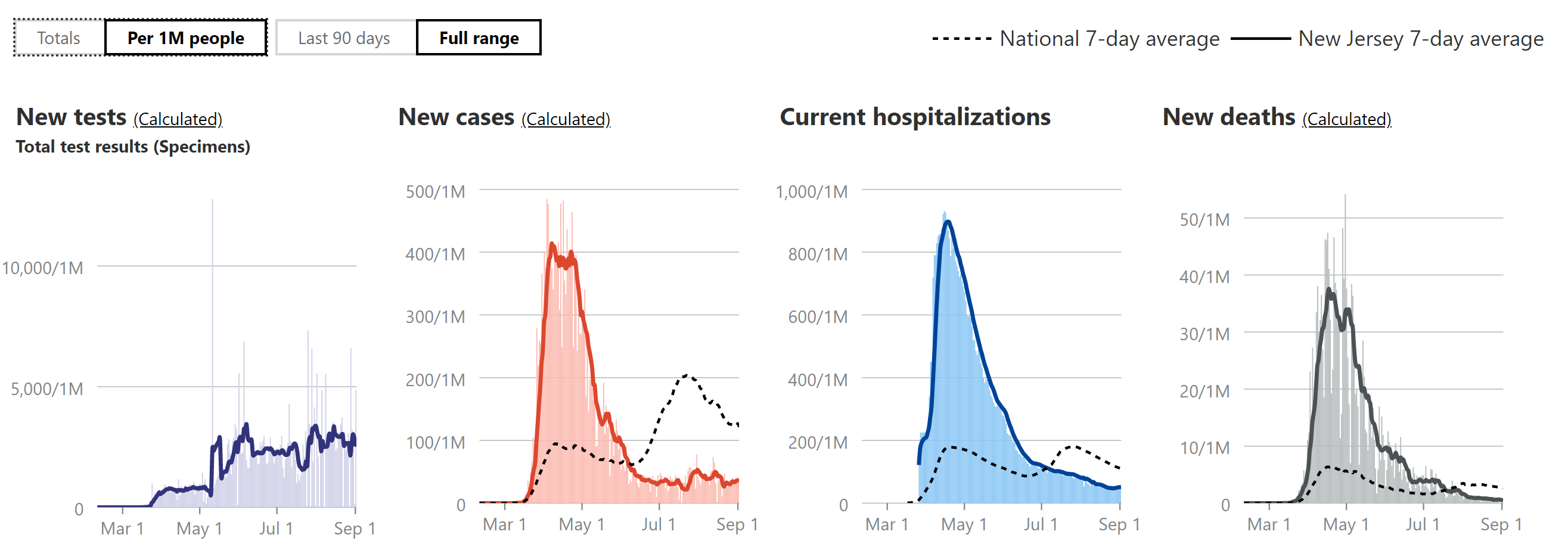
Last edited:
Who said they were going to get passed? I've been saying for 2+ months now that wave 2 major states (AZ, TX, FL and CA), which I was talking about would likely have deaths that are 1/3-2/3 the per capita death rates of NY/NJ's death peak levels in wave 1; I adjusted that early on saying CA was going to be significantly lower than that (about half of TX/FL). And this is roughly how it played out, although AZ/FL/TX were on the low side of my guesstimated death peak, i.e., in the 30-40% range of NJ.Who cares about cases...its about deaths
Do you even see the rates..ny and nj will never be passed
The reasons NJ (and NY) won't get passed by anyone is nobody is going to get completely annihilated unexpectedly like we did given the complete lack of testing in place during the exponential growth phase early on, which was unfortunately at its worst here given that, plus the densest population and commuting population in the country; in addition, treatments/procedures now are much better, cutting death rates by about half in wave 2 (vs. hospitalizations). I used to post multiple times per day about the NY/NJ initial wave with regard to what was going on and why and what we were trying to do about it.
Today we passed 190,000 coronavirus death on Worldometer. It appears we are pacing 10,000 deaths every two weeks.
Last edited:
That can be your contribution to the thread.interesting to note that no one here breakdowns the new deaths and their ages
They actually had more deaths early on then they have had more recently, although that may change.Because Covid is only hitting Iowa now. Just like it went through other parts of the country.
Like many states, even the remote ones it got into and wreaked havoc in their nursing homes. This one is from April.

Outbreaks at nursing homes spike as Iowa moves to reopen
Iowa is experiencing a surge of coronavirus outbreaks at long-term care facilities, including at one of the nation's largest nursing homes for military veterans.
This is 100% true, when we look back the impact of the first wave, (which as #'s points out was talked about thoroughly in real time), will be significantly bigger then what transpires afterward. But there are numerous other story lines along the way, stories that in the moment are significantly more important because they are more timely.you keep bringing up Texas and Florida constantly....the bigger story long haul is NY and NJ and Mass
Really the current story out of NJ/NY is not what happened in April, it is if we should be looking to be more open right now because our current numbers are so good..
Building trust through communications in this media evornment in the US is impossible. Everytime Trump said anything it was immidiately attacked. Trump shares his blame w the overly opptomistic outlook and twitter rant, fauci and the masking fiasco shares blame , but the media and opposition politicians were countering anything saidGreat video by the Times showing what effective COVID communications looked like in many countries and what confusing, ineffective communications have looked like in the US. Fairly obvious rules of communications that we used to practice very well in past disasters - just not now - build trust, know your audience, and think long term. It's really not difficult - we just haven't done it yet.

Opinion | The Three Rules of Coronavirus Communication (Published 2020)
While the United States was creating confusion with its virus messaging, the rest of the world got creative.www.nytimes.com
And this is a major issue in this country. From cable news to often fraudulent internet news the way people are getting information is having a very negative effect. Unfortunately I see no end to it.Building trust through communications in this media evornment in the US is impossible. Everytime Trump said anything it was immidiately attacked. Trump shares his blame w the overly opptomistic outlook and twitter rant, fauci and the masking fiasco shares blame , but the media and opposition politicians were countering anything said
Like I have said from the very beginning. All the shut downs and other restrictions was just kicking the can down the road. In the end we didn't really save anyone. We just pushed this thing into a 9 month event.Today we passed 190,000 coronavirus death on Worldometer. It appears we are pacing 10,000 deaths every two weeks.
LOL. Well it must be true if a NYT Opinion piece says so....Great video by the Times showing what effective COVID communications looked like in many countries and what confusing, ineffective communications have looked like in the US. Fairly obvious rules of communications that we used to practice very well in past disasters - just not now - build trust, know your audience, and think long term. It's really not difficult - we just haven't done it yet.

Opinion | The Three Rules of Coronavirus Communication (Published 2020)
While the United States was creating confusion with its virus messaging, the rest of the world got creative.www.nytimes.com
The link hits a paywall so I can only assume that the NYT cherry-picked some clips in lauding Barry-O'Biden on their swine flu "communications" that led to 60 million infections in the U.S.
Another lame political jab from our Board "science guy".
Like I have said from the very beginning. All the shut downs and other restrictions was just kicking the can down the road. In the end we didn't really save anyone. We just pushed this thing into a 9 month event.
So you’re saying we would have been in the same place without any restrictions?
So you two metro dudes never heard anyone call the CPC "chicoms"...👌What does “chicomvirus” mean? Serious question since I’ve only seen it in this thread.
I was thinking the same thing. Legit thought he couldn’t spell it, and if it’s supposed to be a joke, nobody gets it. Must be neckbeard humor.
23,000 patients already enrolled, data coming soon!
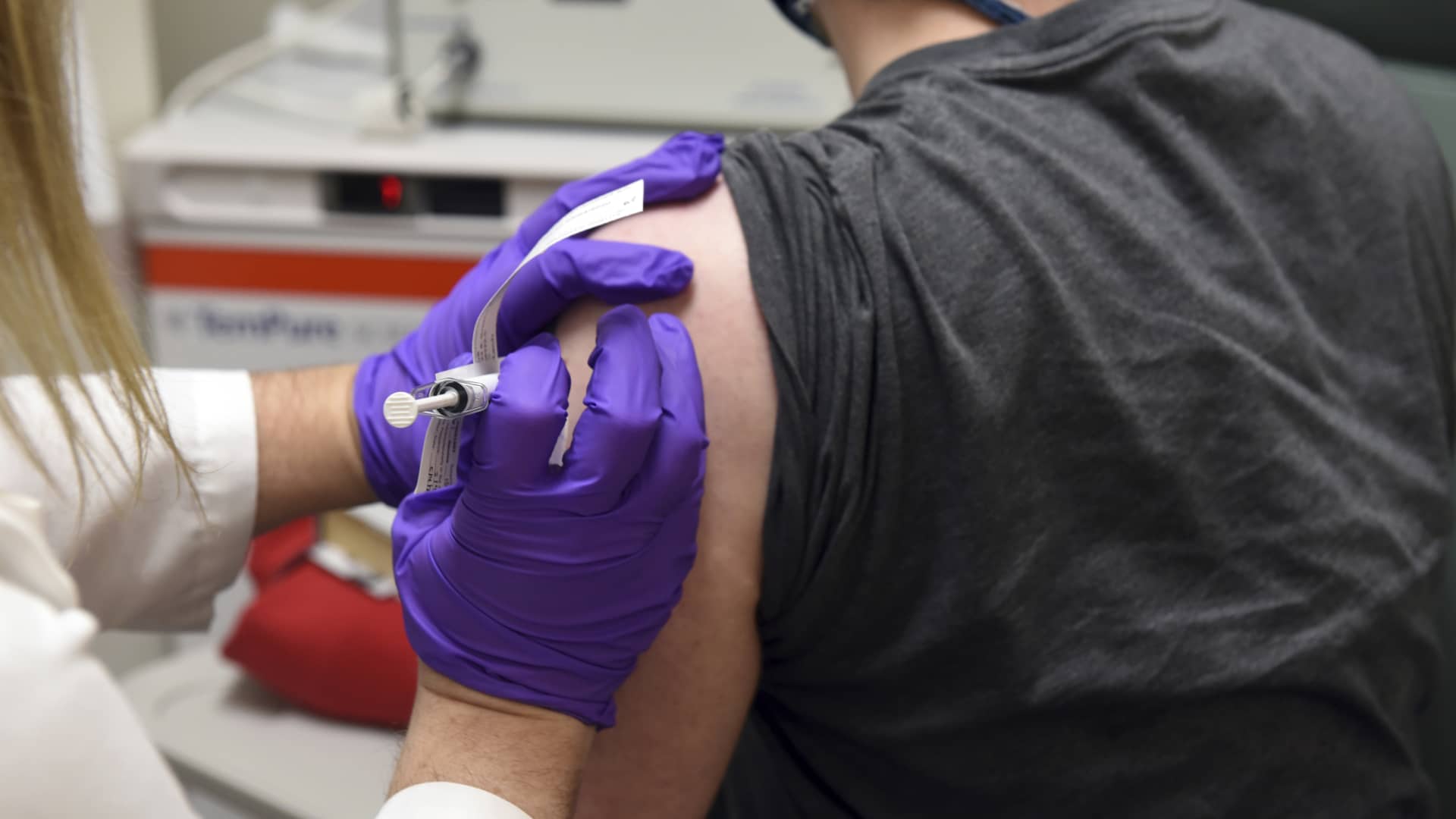
 www.cnbc.com
www.cnbc.com

Pfizer CEO confirms late-stage coronavirus vaccine trial may have results in October
Pfizer's potential vaccine is one of three backed by the U.S. that's currently in late-stage testing.
23,000 patients already enrolled, data coming soon!

Pfizer CEO confirms late-stage coronavirus vaccine trial may have results in October
Pfizer's potential vaccine is one of three backed by the U.S. that's currently in late-stage testing.www.cnbc.com
They’ll be fully enrolled in 2 weeks I’m thinking. The thing people forget is everyone needs a booster shot 21 days later. So some of the people won’t even be fully vaccinated until early October.
My question is, once everyone is vaccinated, how long do you need to wait in order to know if things are working?
That viewpoint doesn't jive with the lower death rates due to improved medical procedures that we have been seeing for the last couple of months......Like I have said from the very beginning. All the shut downs and other restrictions was just kicking the can down the road. In the end we didn't really save anyone. We just pushed this thing into a 9 month event.
because the virus didn't originate in China...LOL...here's your hat broIt's a qanon thing. Tinfoil hat, dregs of the internet type stuff

And this is a major issue in this country. From cable news to often fraudulent internet news the way people are getting information is having a very negative effect. Unfortunately I see no end to it.
It's kind of ironic that the NY Times is airing this video as their reporting has gone full resistance.
No the worst would have been over by late spring. Numbers would be close. 200k deaths was the prediction without doing anything. And with all that was done we will still cross the 200k mark early next week. We stopped nothing just spread it out over 6 months and more.So you’re saying we would have been in the same place without any restrictions?
No the worst would have been over by late spring. Numbers would be close. 200k deaths was the prediction without doing anything. And with all that was done we will still cross the 200k mark early next week. We stopped nothing just spread it out over 6 months and more.
I don’t think 200k was the prediction of doing nothing. I thought it was something like 1mil? I couldn’t imagine the carnage if this country did nothing.....would have been catastrophic.
Sweden did nothing basically. Wasn't catastrophic. Have nearly the same death rate % per 100k.I don’t think 200k was the prediction of doing nothing. I thought it was something like 1mil? I couldn’t imagine the carnage if this country did nothing.....would have been catastrophic.
No the worst would have been over by late spring. Numbers would be close. 200k deaths was the prediction without doing anything. And with all that was done we will still cross the 200k mark early next week. We stopped nothing just spread it out over 6 months and more.
You continue to show absolutely no understanding of this virus. I've said this countless times, but using the CDC infection fatality rate estimate of 0.65% (most experts are estimating an IFR of 0.5-1.0%, not accounting for any cure/vaccine) and an estimate of 50-80% infected (herd immunity range), for 330MM, that would be 1.1-1.7MM US deaths, eventually, if we did nothing. Even if the T-cell cross-reactivity/heterogeneity arguments being made are true and herd immunity is reached at somewhere as low as 25% infected, that's still 550K deaths in the US.
We're already at 190K and many projections have us at about 300K by the end of November (IHME is at 317K by then), even with the improved treatments/procedures we have, which have cut the wave 2 death rates, relative to hospitalizations, by about 50%. If the engineered antibody cocktails pan out in the next month or so (enrollment has been slower than expected) and/or if an effective vaccine becomes readily available by the end of the year, of course, the numbers beyond 300K should go way down.
However, for public health planning, which can't assume cures/vaccines being ready at a specific time, the "do nothing" numbers have always been way, way beyond 200K. And many studies have shown that the interventions (stay at home orders, masking, distancing, etc.) saved at least a few hundred thousand lives, relative to those worst credible case 1MM+ deaths.
Why would anyone want to be Sweden? I would have rather been in with the countries that have 1/10th to 1/100th of our death rates (and serious illness rates)...Sweden did nothing basically. Wasn't catastrophic. Have nearly the same death rate % per 100k.
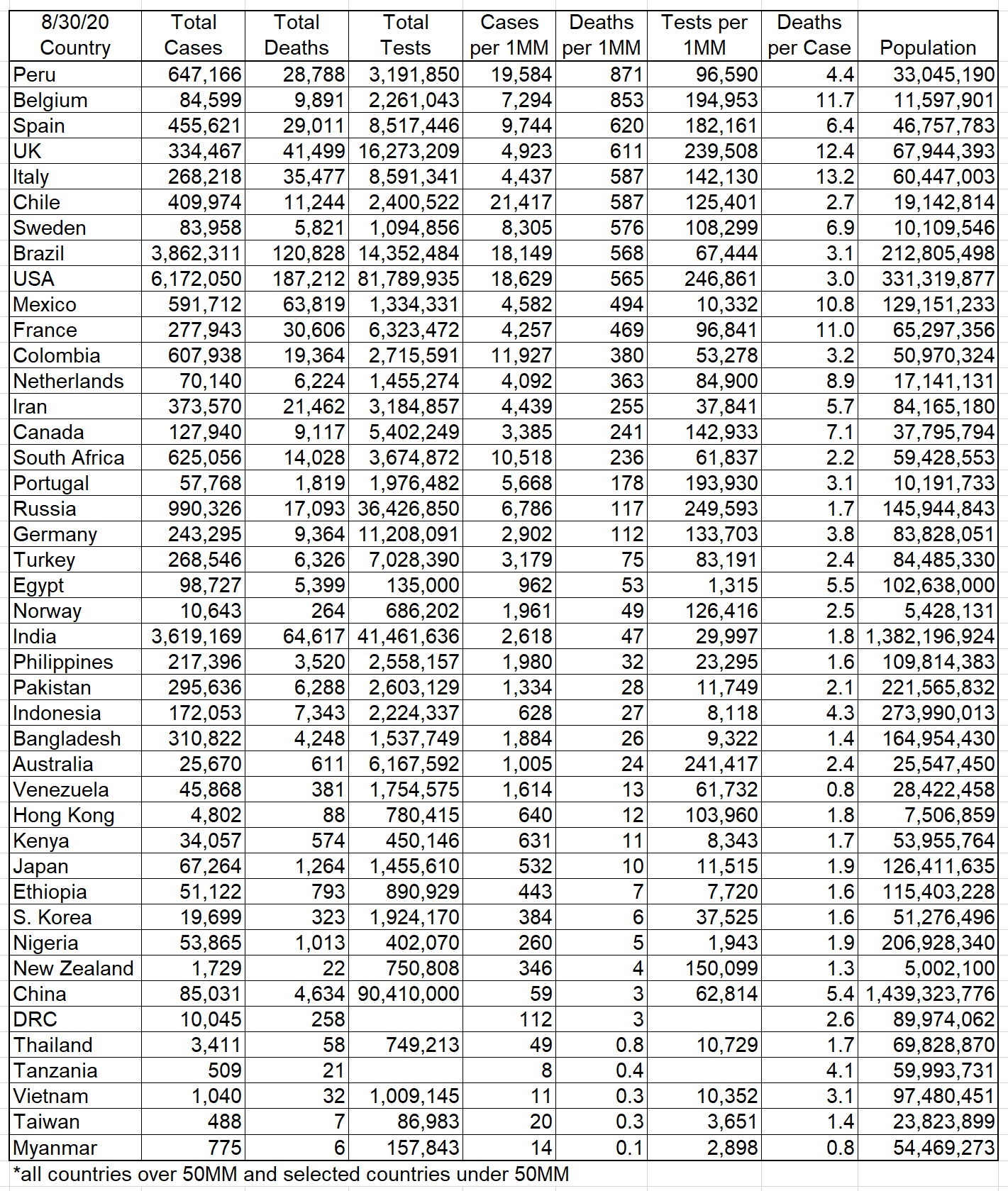
I didnt say anyone wants to be Sweden. I said they did very little and we had/have many restrictions in place yet our death rate % is nearly the same. Which also blow a hole in the math and theory that lax restrictions didn't lead to huge numbers. So the 1 million + for the US is a bunch of garbage.Why would anyone want to be Sweden? I would have rather been in with the countries that have 1/10th to 1/100th of our death rates (and serious illness rates)...

This topic again? Good work, stay true to your fundamentals.Sweden did nothing basically. Wasn't catastrophic. Have nearly the same death rate % per 100k.
This is the first time I've ever posted a comparison of US vs Sweden so I have no clue what your are talking about. Bad work on your part. KeepThis topic again? Good work, stay true to your fundamentals.
I didnt say anyone wants to be Sweden. I said they did very little and we had/have many restrictions in place yet our death rate % is nearly the same. Which also blow a hole in the math and theory that lax restrictions didn't lead to huge numbers. So the 1 million + for the US is a bunch of garbage.
As you've said many times, distancing works and the Swedes do a pretty good job of it, but they simply did it without mandates. The number of people who seem to think Sweden did "nothing" and it was party time 24/7 there is astounding. See the excerpt below from STAT.
The 1MM+ US deaths number, assuming zero interventions/controls, is a credible worst case, not a prediction. Fortunately, we did a bunch of interventions and many (not enough, but many) are practicing masking/distancing, so we'll never know how close we would have come to that number and with cures/vaccines hopefully not far away, maybe we can even keep it to under 300K, which is still frighteningly bad vs. dozens of countries who have done far better, but that ship has sailed for us, sadly.
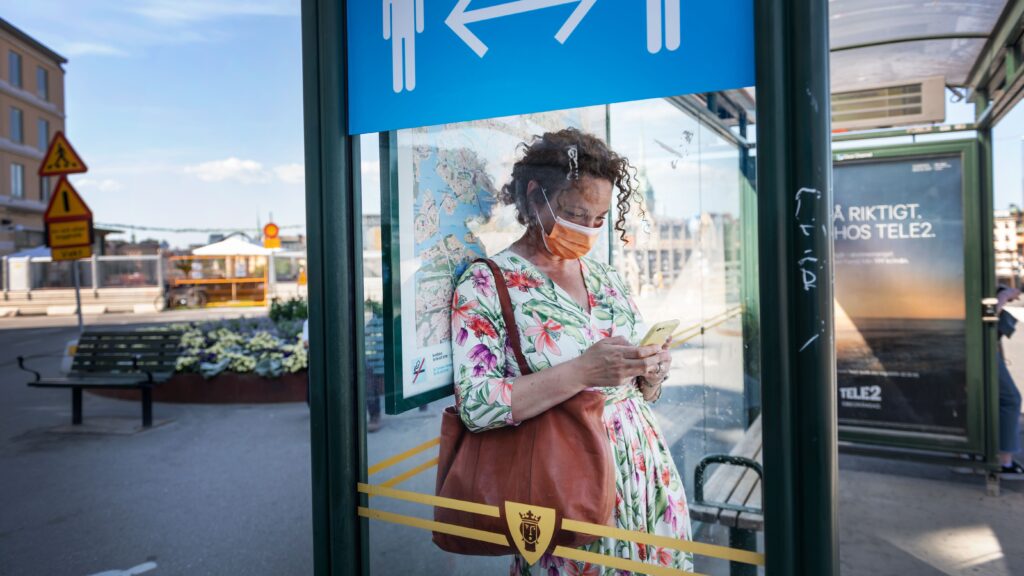
We're the accidental Sweden, raising fears Covid-19 will get worse - STAT
Sweden's light-handed restrictions produced results similar to those in countries with stricter policies because Swedes voluntarily self-isolated.
 www.statnews.com
www.statnews.com
Sweden never imposed a total shutdown of nonessential businesses. It closed universities and banned gatherings of more than 50 people, including sports events, and discouraged domestic travel. But most bars, restaurants, schools, salons, and stores were allowed to remain open, with largely voluntary social distancing. “If Spain and Italy got hit by an early Covid-19 tsunami,” said Peter Kasson of the University of Virginia School of Medicine and Sweden’s Uppsala University, “Sweden said, ‘let’s go swimming.’”
Many of its citizens, however, didn’t jump into the deep end. For one thing, “a lot of Swedes went well beyond the official recommendations for social distancing, individually taking the kinds of actions that in other countries were mandated,” said Kasson, co-author of a recent study of Sweden’s strategy. “A lot of people self-isolated at home, and companies promoted working from home even though it wasn’t mandated. That shows that individual decisions that reduce [viral transmission] can have a substantial effect on national outcomes.”
Among those individual decisions: 58% of Swedes didn’t meet friends, and 74% stayed home during their spare time, researchers reported in May.
Sweden did nothing basically. Wasn't catastrophic. Have nearly the same death rate % per 100k.
Sweden did a lot. They social distanced better than us and how they were able to get things under control after getting pummeled. Their culture is way different than us though and why it “worked” for them.
- Status
- Not open for further replies.
Similar threads
- Replies
- 592
- Views
- 15K
- Replies
- 80
- Views
- 2K
- Replies
- 608
- Views
- 17K
- Replies
- 280
- Views
- 6K
- Replies
- 139
- Views
- 2K
ADVERTISEMENT
ADVERTISEMENT

